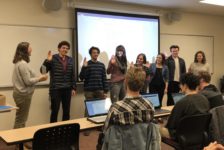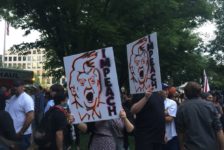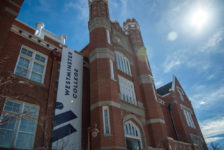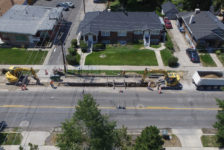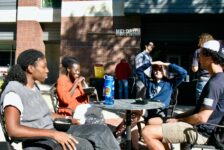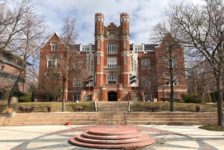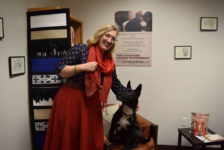
Shamby Polychronis, an associate professor of education, and Marco Barker, the associate vice president for diversity, equity and inclusion meet with the Diversity Council to discuss issues affecting the Westminster College community. Barker and Polychronis are responsible for guiding the development process for the college’s new diversity statement. Photo courtesy of The Office of Diversity, Equity & Inclusion.
Though Westminster College has long professed the importance of diversity, student activists have spent the past year and a half challenging the college for its lack of an official statement about what that word actually means to the institution.
In response, administrators are currently in the process of revising the college’s official diversity statement, which will outline how the college values and pursues equality and inclusion.
“The diversity statement operates similarly to a mission statement,” said Marco Barker, Westminster’s associate vice president of diversity, equity and inclusion. “It’s something that connects us. It’s something that grounds us and can be foundational.” Barker was hired in Fall 2016 after student protests over how the college had previously addressed diversity issues within its community—tensions that came to a head when The Forum published comments from administration that some students felt misrepresented diversity as a variety of majors rather than as a variety of minority groups.
When he started, Barker said he had heard concerns that members of Westminster’s community weren’t on the same page about what diversity meant.
“[The diversity statement] serves to give a grounding point of reference but is also aspirational and allows us to articulate who we want to be as an institution,” Barker said.
Though he said he believes progress is being made, Barker also said he understands student concerns and provided them the opportunity to give personal feedback on a draft of the statement in April.
“If I was being very transparent, one of the concerns that people have about diversity statements in general, nationwide, is that it’s prescriptional—it’s telling us what to do,” Barker said. “That’s not the spirit of the diversity statement. The reason it’s been advocated for and so many people have been part of the process is because it can provide a framework to think about what we do and how we do it.”
Sabi Lowder, next year’s ASW vice president, said she believes there’s a difference between thinking about diversity issues and acting to change them.
“I think that there are definitely students who care and students who care deeply,” Lowder said. “Making sure that spreads through the entire campus is an entirely different thing—making sure that every student values diversity and inclusion.”
Lowder said convincing all students to be willing to take action can be a difficult task.
“I wish there was an easy way to just be like, ‘Hey, students. Care. Care about these things because they impact you and they impact people who are members of your community,’” Lowder said. “I think that while people might never see [marginalized groups] and while they might not identify as someone who needs the Diversity and Inclusion Center, there are people who are part of the community who aren’t being heard who need these resources.”
Westminster College President Steve Morgan said he has had to reconsider how he thinks about diversity and inclusion issues after student protests and institutional restructuring.
“For me this has been a learning period,” Morgan said. “I’ve spent a lot of personal time learning about the issues and trying to understand my own privilege in the position that I have.”
Morgan said he believes Westminster needs to raise its standards so all members of its community feel welcome.
“Nothing makes me sadder than to have a student say, ‘I don’t know if I fit here,'” Morgan said. “That, to me, is a failure on our part. It shouldn’t happen at this school.”
Ryan LaRe, a junior political science major who helped lead the student diversity protests in December 2015, said they wish faculty and staff were more willing to be the catalyst for change.
“I guess a lot of it is if there’s a will to want to do it,” LaRe said. “I think there’s a difference between being like ‘Oh, we care about diversity at Westminster College in Salt Lake City’ and actually changing shit. Those are two different things.”
LaRe said they think the college is going through a transitional period and is glad to see the beginning of efforts to address the issues.
“I’m hopeful,” LaRe said. “I don’t know if it will amount to anything, but I’m hopeful.”

